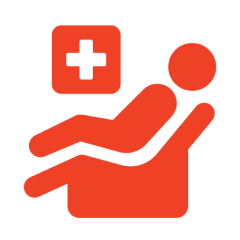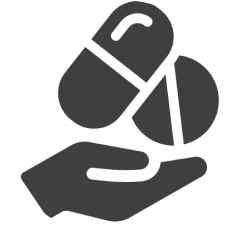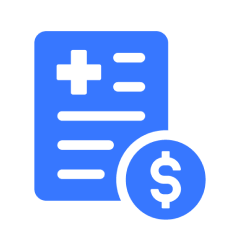Twenty years after Harry Truman spoke these words about the necessity of national healthcare, President Lyndon Johnson signed into law Medicare legislation, a historic moment intended to transform American healthcare for the better, forever.
Since Medicare’s inception in 1965, it has benefitted millions of Americans However, its complex structure and ever-changing policies pose a challenge for many beneficiaries.
This is where today’s pharmacists can navigate the intricate landscape and play a vital role, not only as healthcare providers, but also trusted advisors for patients and viewed as skilled experts in the medical field and ensure optimal health benefits and overall costs.
Key Takeaways
- Pharmacists can play a crucial role in guiding patients through Medicare Part C and D, ensuring optimal health benefits and cost savings.
- Understanding both plans can significantly enhance patient care and pharmacy service offerings.
- Proper billing practices for Medicare Part C and D can improve pharmacy profitability and overall success.
Index
- First the Basics: The Breakdown of Medicare and Who Needs What
- The Role of Pharmacists in Medicare Optimization
- The Comprehensive Choice: Medicare Part C
- The Prescription Choice: Medicare Part D
- The Role of the Pharmacists: Providing Patient Support Through the Medicare Maze
- How Accurate Billing Benefits Both Your Patients and Your Pharmacy’s Profitability
- DocStation: Pioneering the New Era of Pharmacy Care
In today’s Medicare landscape, pharmacists can emerge as indispensable healthcare navigators, steering patients through the multi-part maze with expertise and care.
But — in order to truly excel in this role, pharmacists must have the tools they need to promote patient advocacy and procure higher profits.
Pharmacists can leverage their expertise to enhance patient care while also identifying opportunities for growth and efficiency within the pharmacy’s operations.
Let’s find out how this can better be done by looking specifically at Medicare Part C and D.
First the Basics: The Breakdown of Medicare and Who Needs What
Medicare is a federal health insurance program in the United States that was created to provide coverage for individuals who are 65 years or older, as well as for some younger people with disabilities or certain chronic conditions.
As of 2022, nearly 64.3 million people were enrolled in Medicare, proving its critical role in our country’s healthcare system.
Medicare began as a solid solution for some of the most vulnerable Americans; however it wasn’t until 1997 when parts were added to make it the comprehensive (and more complex) program it is today.
Here’s a simplified breakdown of the program, what each part covers, and who needs it:

Medicare Part A (Hospital Insurance):
What It Covers: Inpatient care in hospitals, skilled nursing facility care, hospice care, and some home health care.
Who Needs It: Individuals who require hospitalization or specialized care in a medical facility.

Medicare Part B (Medical Insurance):
What It Covers: Physician and outpatient services, preventive services, ambulance services, mental health care, and durable medical equipment.
Who Needs It: Beneficiaries who require regular medical services or supplies to treat or manage a health condition.
Medicare Part C (Medicare Advantage):
Established as part of the Balanced Budget Act of 1997: Medicare+Choice was the original name and renamed Medicare Advantage in 2003 under the Medicare Prescription Drug, Improvement, and Modernization Act.
What It Covers: All benefits of Part A and Part B, often with additional benefits like dental, vision, and hearing coverage, and usually includes Part D prescription drug coverage.
Who Needs It: Those looking for an all-in-one plan that provides comprehensive coverage through private insurance companies.

Medicare Part D (Prescription Drug Coverage):
What It Covers: Prescription drugs, vaccines, and some recommended shots.
Who Needs It: Individuals who require regular prescription medications.

The Role of Pharmacists in Medicare Optimization
While each part of Medicare serves an important purpose, it can often be a frustrating system to figure out, particularly for our older population who need it most.
Arming our best and brightest medical professionals with the right tools to communicate effectively with their patients will help alleviate some of the confusion surrounding Medicare and make sure it’s available to all who need it.
Some of this can be done through continuing education.
Moreover, some of it can be done with the right management software — the type that’s designed to streamline patient information, improve the accuracy of Medicare billing, and facilitate clearer patient communication.
These types of tools will keep your patients healthy and your pharmacy profitable, creating a symbiotic relationship that benefits everyone.

Simplify Pharmacy Operations with DocStation
Improve patient care and efficiency with DocStation’s seamless provider-payer collaboration.
The Comprehensive Choice: Medicare Part C
Medicare Part C (commonly known as Medicare Advantage) is a health insurance option provided by private insurance companies and each is approved by Medicare.
A Medicare Advantage Plan is an excellent alternative for many patients and offers an all-in-one approach to healthcare coverage.
These plans are similar to individual health insurance policies offered by employers and may differ from original Medicare in terms of monthly premiums, provider networks, copay, coinsurance, and out-of-pocket limits.

Some of the Key Benefits of Enrolling in a Medicare Part C (Medicare Advantage) Plan:
- All-in-One Coverage: Medicare Advantage plans include all the benefits of Medicare Part A (hospital insurance) and Part B (medical insurance).
- Additional Benefits: Many plans offer extra coverage, including vision, hearing, dental, and wellness programs, which are not covered under original Medicare.
- Prescription Drug Coverage: Most Medicare Advantage plans also include Medicare Part D, which covers prescription medications.
- Out-of-Pocket Maximum: These plans have a yearly limit on your out-of-pocket costs for medical services, which can provide financial protection.
Medicare Advantage plans can be a suitable choice for those patients who want comprehensive coverage beyond what original Medicare offers.
These plans may also allow patients to have a wider range of providers available to them; although, they are not always offered in every part of the country.
- Enjoy robust health and rarely need medical services.
- Do not anticipate hospital stays or significant surgeries.
- Maintain good oral health, requiring only routine dental care.
- Are not on regular medication for chronic conditions.
- Possess a solid financial foundation to manage unforeseen medical expenses.
- Often travel and prefer the ability to consult with any provider, regardless of network.
- Require auditory assessments and might benefit from hearing aids.
- Travel infrequently and are comfortable with a defined network of healthcare providers.
- Have a modest budget and prioritize low-cost premiums while maintaining good health.
- Qualify for Medicaid benefits.
The Prescription Choice: Medicare Part D
Medicare Part D was introduced in 2006 as a program to help cover the cost of prescription drugs for Medicare beneficiaries.
Like Medicare Part C, it’s available through private plans approved by Medicare, either as a stand-alone prescription drug plan (PDP) for those enrolled in original Medicare or as part of a Medicare Advantage plan that includes drug coverage.
Enrolling in a Medicare Part D plan offers several benefits to patients:
- Cost Coverage: Part D helps cover the cost of prescription drugs, significantly lowering your patient’s out-of-pocket expenses for high cost medications.
- Protection Against High Costs: This plan provides protection against higher costs for prescription drugs, especially for those with chronic conditions that require ongoing medication.
- Access to Medications: Patients can gain access to a wide range of prescription medications, including both brand-name and generic drugs when enrolled in this program.

- Medication Therapy Management: Patients enrolled in the Medicare Part D plan can work with a skilled pharmacist with medication therapy management, ensuring that their prescriptions are appropriate and effective.
Medicare Part D is an important consideration for anyone who needs regular prescription medications. It’s designed to make healthcare more affordable and accessible for Medicare beneficiaries.
Optimize Your Pharmacy Workflow
-
Reporting:
Monitor and optimize clinical, business, and revenue.
-
Health Records:
Comprehensive EHR tailored for pharmacies.
-
Medical Billing:
Simplified billing for clinical services.
The Role of the Pharmacists: Providing Patient Support Through the Medicare Maze
Pharmacists are pivotal in managing patient care under all parts of Medicare but can play an integral role in helping patients navigate through the various plans and determine which is best for them.
Not only do pharmacists have the highest level of expertise in drug classes among medical providers, but they also understand insurance complexities, formularies, and the intricacies of medication management.
Let’s take a deeper dive into the roles that pharmacists play and why they are such a key player in patient care.
Navigating Plan Choices and Benefits

Pharmacists are the trusted guide that patients count on when working through the Medicare maze. No other healthcare provider has the skills necessary to help our older population understand the structure and benefits of their plans.
From explaining safeguards like tiered costs and protected medication classes to preventing medication errors and reducing unnecessary healthcare costs, pharmacists are indispensable allies in the journey towards a healthier, well-informed senior community.
Patient Approaches and Opportunities
As highly skilled and easily accessible healthcare providers, pharmacists can offer simple yet impactful recommendations to save their Medicare patients significant costs.
- Remind patients to review their plans annually to ensure their medications are covered.
- Assist with identifying coverage restrictions.
- Advise on budgeting for renewed deductibles, medication costs, or finding ways to lower a monthly premium.

Pharmacists are first-line medical providers who often have more face-to-face time with their patients than other healthcare providers. They are able to recommend generic drugs and therapeutic alternatives in lower-cost tiers, request 90-day refills to improve adherence (and co-pays), and ensure a patient’s pharmacy accepts their preferred plan to potentially reduce copays further.
A pharmacist is not only a skilled medical provider looking out for a patient’s physical health,they are concerned about their financial health.
MTM, or comprehensive medication review (CMR), is a critical component of Medicare Part D that pharmacists can administer.
Medication Therapy Management is a key component of a patient’s overall health plan as it offers an opportunity to improve a person’s quality of life by ensuring optimal therapeutic outcomes.
MTM is designed to:
- Optimize medication use for improved patient outcomes.
- Reduce the risk of adverse drug events and interactions.
- Enhance patient understanding and adherence to medication regimens.
- Identify potential cost-saving opportunities for patients.
- Support healthcare providers with up-to-date patient medication information.
- Facilitate a collaborative approach to healthcare, involving pharmacists, doctors, and patients.
- Improve overall healthcare quality and safety for patients.
There is no doubt that a pharmacist plays a pivotal role in a patient’s overall health.
The trust a patient places in their pharmacists extends far beyond just filling a prescription.
Patients have learned to rely on pharmacists to be their advisors, educators, and advocates in their journey to sustainable and better health.
And pharmacists need to make sure they are being correctly compensated for this level of care.
How Accurate Billing Benefits Both Your Patients and Your Pharmacy’s Profitability
In the complex landscape of Medicare Part C and D billing, healthcare providers often encounter challenges such as coding errors, the complexity of Medicare programs, and stringent compliance regulations.
To overcome these obstacles, pharmacy healthcare providers can adopt several best practices.
-
Invest in Comprehensive Education and Training:
Continuously update the knowledge base of your staff with the most current billing procedures and regulatory changes. This can be achieved through regular workshops, seminars, and online courses that focus on the nuances of pharmacy billing. Trained staff prevents and reduces errors and improves efficiency.
-
Conduct Regular Audits for Compliance and Improvement:
Establish a routine of conducting thorough audits to verify that billing practices align with current private health insurance companies and Medicare policies. These audits can serve as a learning tool, highlighting trends in billing inaccuracies and areas that require additional training or system refinement.
-
Enhance Patient Financial Transparency:
For patients, clear and precise billing equates to a better understanding of their healthcare costs. Ensuring that they are only charged for the services received, without any overpayment, fosters trust and confidence in the healthcare system.
-
Optimize Pharmacy Financial Health:
For pharmacies, accurate billing is instrumental in securing rightful reimbursements, reducing the frequency of claim denials, and maintaining a healthy cash flow. These factors are essential for sustaining profitability and the ability to provide quality patient care. Efficient billing processes free up resources, which are redirected toward critical areas of the pharmacy.
-
Implement Advanced Billing Software Solutions:
Adopt sophisticated billing software that can automate many of the routine tasks associated with billing. This technology should be capable of flagging common errors, providing real-time eligibility checks, and simplifying the claims process to enhance overall billing accuracy and operational efficiency. Advanced software solutions integrate with other pharmacy management systems, providing comprehensive tools for managing pharmacy operations.
DocStation: Pioneering the New Era of Pharmacy Care
As the landscape of healthcare evolves, so does the role of pharmacists.
It’s a new time for pharmacy professionals–a time that we believe is long overdue.
DocStation: Pioneering the New Era of Pharmacy Care
At DocStation, we envision a shift from the conventional dispensary role of pharmacists to a model where patient care is paramount and pharmacists are recognized as vital healthcare providers.
Leveragingautomation and efficient processes, DocStation empower pharmacists to apply their knowledge where it counts the most—caring for patients- while ensuring they are properly reimbursed for theircare.
DocStation has been created by pharmacists for pharmacists to allow our skills as healthcare providers to be recognized, respected, and properly compensated.
Step into the future of pharmacy.
Find your pharmacy’s potential with DocStation and rediscover what’s truly important—excellent patient care and long-term professional fulfillment.
Connect with DocStation today.
Collaborate, Innovate, Succeed with DocStation
Experience seamless collaboration between providers and payers with our single solution, ensuring pharmacists are fairly compensated for their essential services.











